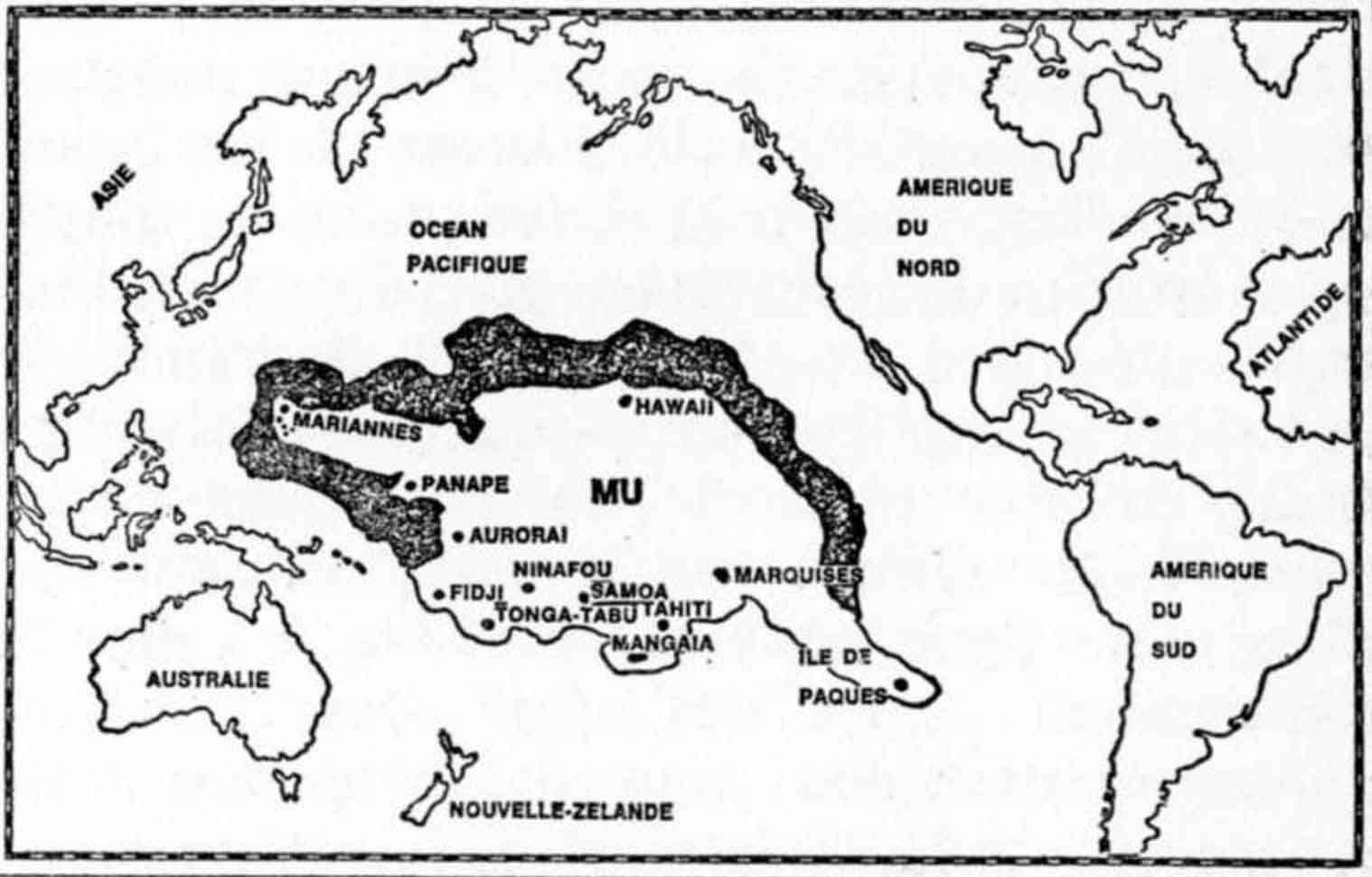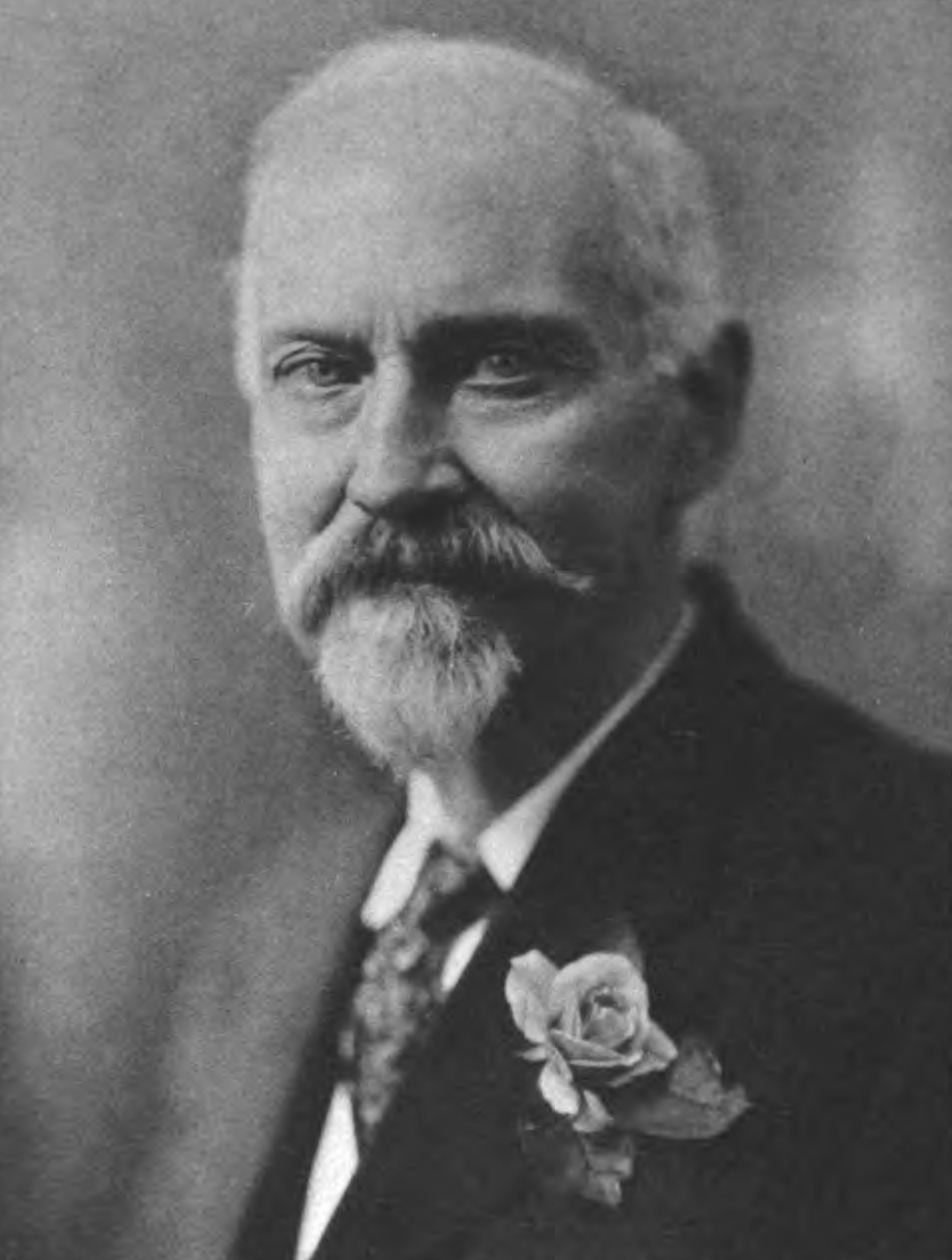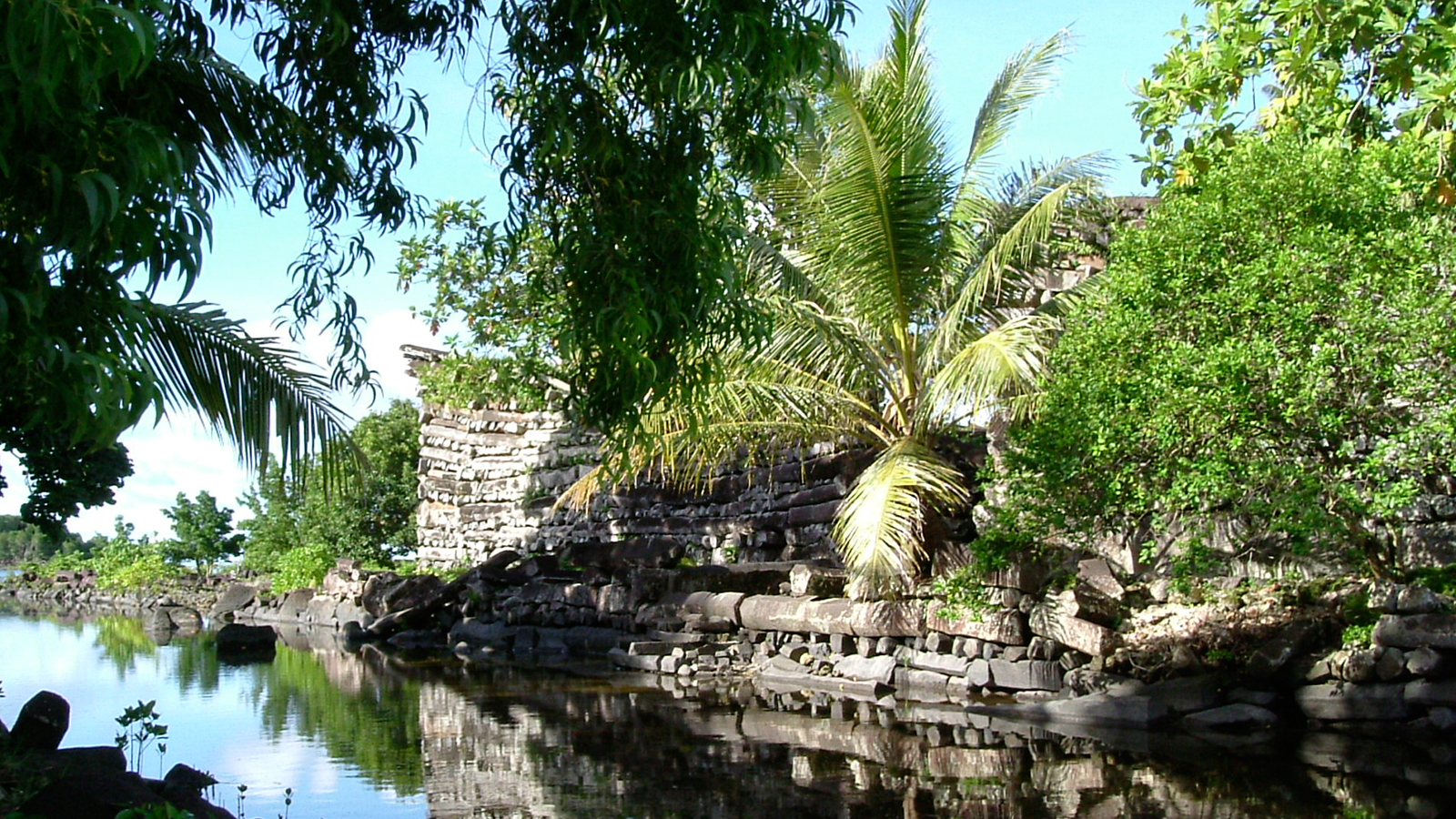The archaeological enigma of the "ghost site" in the archipelago of Micronesia, made up of about 100 small artificial islets connected to each other by a network of canals, has bewitched "mystery investigators" over the centuries, from Irish sailor James O'Connell to Colonel James Churchward, to neuropsychiatrist Oliver Sacks.
di Francis Amendola
via The Lost Image
Nan Madol is an extraordinary archaeological site which, together with several others scattered around thePacific Ocean, constitutes one of the great mysteries of history and a notable disturbing element for the stolid certainties of "official" science, which, failing to explain it, prefers to continue to ignore it. It is located on thePohnpei Island, formerly called Ponapé, in the Caroline Islands, a vast archipelago of Micronesia in which, according to historians and academically trained archaeologists, no civilization capable of erecting such monuments should have flourished. It is a monumental complex of extraordinary proportions, in comparison with which even the enigma of the moai of Easter Island, the grandiose statues scattered along the slopes of the loneliest and easternmost island of Polynesia, appears relatively simple.
Strange to say, the issues relating to Nan Madol are little known even among heterodox scholars of history and archeology and even among fans of mystery at all costs, those always ready to bring up the legacy of Atlantis, and perhaps the intervention of extraterrestrials, every time we come across an anomalous element compared to our current knowledge. Neither mention it nor Francis Hitching in his Atlas of Mysteries, nor Richard Cavendish in Encyclopedia of the supernatural, nor did Jennifer Westwood in hers Atlas of mysterious places. It is as if those huge half-buried constructions in the jungle and in the sea, of which we know practically nothing for certain, simply did not exist.

Perhaps, to delay the need for a serious and in-depth study posed by the ruins of Nan Madol, it has contributed the fact that one of the first to deal with it was, between the end of the nineteenth and the first decades of the twentieth century, a character who did not enjoy of any credit with "official" science: British Colonel James Churchward, a staunch supporter of the lost continent of Mu and controversial scholar of the so-called Naaacal tablets, found - according to him - in some places in India and, later, in Mesoamerica, written in an unknown language and which he himself would have deciphered, obtaining disconcerting information on the most ancient history of humanity.
This is not the place to expose the theories of the eccentric Churchward, who, being an avowed scholar of esotericism, has not been taken seriously by professional archaeologists or scholars of linguistics with a scientific background. Anyone interested in learning more about the subject can read his weighty volumes, which have also been translated into Italian. For now it will suffice to say that, for Churchward, the continent of Mu, located in the south-central part of the Pacific, would have been the seat of an Empire of the Sun, which gave rise to all the ancient civilizations of the planet, before being destroyed by a series of natural cataclysms.
At the moment of its maximum splendor, it would have hosted a population of 64 million inhabitants, as well as a rich fauna of large animals, including the mastodon, ancestor of our elephants. Characterized by a sub-tropical climate, by very extensive forests and grasslands, the continent of Mu would have achieved a unitary government, although it was inhabited by ten different human races. The Aryans, similar to us, but taller in stature, would have descended from one of those lineages. The catastrophes that destroyed Mu would have been two: one, which occurred in time immemorial, would have broken the great continent, shattering it into a series of smaller islands; the second, about 12 thousand years ago, would have wiped out these too, with the exception of some islets that still exist today.

In his book The Lost Continent of Mu (1926), Churchward puts it this way about i spectacular remains of the island of Ponapé [1]:
"Here is what I consider the most important find among those found throughout the South Seas area. It is the ruins of a large temple, a structure measuring 90 meters long and 18 meters wide, with walls that in the 1874 were nine meters high and that at ground level were one and a half meters thick. On the walls are still visible the remains of some engravings that represent many sacred symbols of Mu. The building featured canals and ditches, dungeons, passages and platforms, all built in basalt stone. Under the quadrangular floor there were two passages of about nine square meters, facing each other, leading to a canal. At the center of the vast quadrangular surface was the pyramidal room, undoubtedly the sancta sanctorum. According to indigenous legends, many generations ago, the temple was occupied by the survivors of a pirate ship that had been shipwrecked. Human remains are still found in one of the dungeons that the outlaws had used as a warehouse. No native willingly approaches the ruins, which are reputed to be haunted by evil spirits and ghosts called mauli. In Ponape there are also other finds, some adjacent to the coast, others on the top of the hills, some even in clearings in the center of the island; however, they all share the fact that they were built in areas from which it was possible to see the ocean. In a clearing there is a pile of stones, which occupies an area of five or six acres and which appears to be placed on an elevated base; around it you can see the remains of what once could have been a moat or a canal. At the four corners of the ruins, which correspond to the cardinal puti, the piles of stones are higher, which suggests that the building was presumably square in shape. I personally believe that the remains of Ponape belong to one of the main cities of the Motherland, perhaps one of the Seven Sacred Cities. It is impossible to estimate its population, it was certainly a large city, perhaps inhabited by a hundred thousand people. "
Churchward, however, considers Nan Madol only as one of the many pieces of the mosaic that brings out the remains of the vanished continent of Mu. Among others, he mentions (in addition to the remains of Easter Island) the two enormous columns, surmounted by an arch, of the coral atoll of Tonga-Tabu; the pyramids of the islands of Guam, Tinian and Swallow Island; the cyclopean walls of the islands of Lele and Kusai (also in the Carolines); the walls of the Samoa Islands; the stone columns, in the shape of a truncated pyramid, of the Marianas; the great ruin on the hill of Kuku, 30 miles from Hilo, in the archipelago of Hawaii; the finds from the Marquesas Islands, in eastern Polynesia; and others.

Pohnpei it is a small island: its surface, including that of the islets in front, measures just 347 square kilometers: a little more than the island of Elba (244 sq. km.); only that, while Elba is located at a very short distance from the continent, Pohnpei is located in the middle of the Pacific Ocean, at enormous distances from the closest continental lands: New Guinea and Australia to the southwest, the Philippines and Asia east to west. It was discovered by Portuguese navigators in 1595. It changed hands from Spain to Germany in 1899 (which, in 1910, repressed a harsh indigenous rebellion in blood); occupied by the Japanese in 1914; invaded by the United States during the Second World War, it remained in American trusteeship from 1947, together with the other islands of the Caroline archipelago. On December 22, 1990, the United Nations Security Council put an end to the protection of the United States, which, however, on the basis of the free association agreement of 1986, continue to take care of foreign relations and the defense of the archipelago. Polite expression to designate the continuation of a real protectorate regime.
Here's how the German researcher Ulrich Dopatka describes Nan Madol's site in his Lexikon der Prä-Astronautik (1979) [2]:
“The area of the ruins is surprisingly large, these are constructions a hexagonal and octagonal basalt columns (said to be 400.000 in all), scattered over a length of over 24 km; some exceed in size and weight the blocks of the pyramid of Cheops. In the past the place bore the name of Soun Nal-Leng, meaning "cliff of the sky" and the legends of Micronesia state that the boulders arrived there in flight. There are walls up to 10 m high. The perfectly smooth, ostrich egg-sized catapult stones found in the ruins form an enigma, since in historical times the catapult was not a war machine known to Micronesians. Openings made in the ground lead into underground chambers. Most of the buildings (walls, roads, canals) lie submerged in the sea that surrounds them; so it is possible that Nan Madol represents the vestiges of a culture of the South Seas, which disappeared in a catastrophic flood and of which we ignore both the time and the origin. From the tests with the method C 14 the constructions and date back to 1180 d. C., but it is a date that seems too recent for this extraordinary, deserted city of stone where today's Micronesians do not dare to go forward for fear of spirits. Their legends often include giants (kauna) and prehistoric dwarves who lived underground, as well as a dragon expert in magic who had placed the blocks in their place and made them fly. Strange is the news spread by the Japanese before 1939, who assured them that they had found submerged treasures in the waters of the Platin archipelago. (…) Nan Madol almost means "place of space", an ambiguous term that could mean many things. The ruins were explored in the 1595th century by missionary J. Hale. The natives also pass down, in their legends, the episode of an occupation of the island by "men with skin so hard that they could have been injured only by hitting them in the eyes". However, it may be that this is the memory of a landing and subsequent confrontation with the Portuguese, who crossed these waters in XNUMX, and that the "hard skin" they speak of were simply the armor that protected them. "
As we will see shortly, speaking of the visit to Nan Madol by the English writer Oliver Sacks, the most recent radiocarbon dates have made it possible to move the construction of the megalithic complex of Nan Madol a lot, dating it back with certainty to a few centuries before the Christian era; which, incidentally, does not simplify things at all, on the contrary it thickens the veil of mystery that surrounds the archaeological site of Pohnpei.

We also talk about a complicated network of underwater tunnels which, starting from the port of Nan Madol, would connect the various islands of the archipelago and that would lead to two other ancient submerged cities, built, in an indefinite time, by the gods, with the help of a magic capable of lifting large stones into the air [3].
Coming to the present day, Pohnpei Island and the ruins of Nan Madol have been visited by a traveler-writer like the English Oliver sacks, a kind of Herman Melville of the late second millennium, who left an interesting relationship. We recall that Oliver Sacks, born in Great Britain in 1933 but resident in the United States, in New York, since 1965, where he opened a neurological office, has become famous for his books that talk about the clinical and human histories of his patients; from one of them, Awakenings (Awakenings), a film starring Robin Williams and Robert De Niro was made [4].

The journey to the Caroline Islands, Guam and other places in the Pacific Ocean is narrated by Oliver Sacks in the book The Island of the Colorblind and Cycad Island, from which we report the salient passages [5]:
"In the thirties of the last century [the nineteenth century, nb], when Darwin traveled on the brig Beagle, exploring the Galapagos and Tahiti, and the young Melville dreamed of his future trips to the South Seas, James O'Connell, an Irish sailor, was abandoned on Pohnpei, a volcanic island with imposing reliefs. The circumstances of O'Connell's arrival are unclear: in his memoirs he declared that he had been shipwrecked with the John Bull near Pleasant Island as far as Pohnpei, reaching it in just four days. Once arrived, wrote O'Connell, he and his companions were attacked by the "cannibals" and soon they were served for lunch; however, they managed to distract the natives from their intentions (at least so they believed) with an overwhelming Irish jig. But O'Connell's adventures weren't over; he was subjected to a ritual tattoo by a young Pohnpeian, who turned out to be the daughter of a chief; then he married her, and became her own boss.
Whatever O'Connell's exaggerations (sailors have a tendency to tell stories, and some scholars consider him a mythomaniac), he was also an attentive and curious observer. He was the first European to call Pohnpei or Ponape by the indigenous name (in his spelling, Bonabee); the first to give accurate descriptions of many Pohnpeian rites and customs; the first to draw up a glossary of the local language; finally, the first to have seen the ruins of Nan Madol: the remains of a monumental culture dating back to two thousand years ago, the mythological keilahn aio ("the other side of yesterday"). The exploration of Nan Madol was the culmination of O'Connell's Pohnpeian adventure, he described the "stupendous ruins" with meticulous attention, until their mysterious abandonment and their transformation into a taboo place. The vastness of the ruins and the profound silence in which they were immersed frightened him until, overwhelmed by the alien atmosphere that reigned there, he was assailed by the ardent "desire to go home". He did not refer (probably because he did not know them) to the other megalithic cultures scattered throughout Micronesia: the gigantic basaltic ruins of Kosrae, the taga megaliths of Tinian, the ancient terraces of Palau and the five-ton boulders of Babel-daop, which bear sculpted faces similar to those of Easter Island. O'Connell, however, grasped what neither Cook nor Bougainville (and indeed none of the great explorers) had understood, namely that these primitive oceanic islands, with their seemingly simple cultures ("palm cultures") were once the seat of monumental civilizations.
We went to Nan Madol on the first day we spent entirely in Pohnpei. Located on the far side of the island, Nan Madol was most easily reached by sea. (...) On the whole planet there is nothing that resembles Nan Madol, this ancient megalithic construction (now abandoned) of about a hundred artificial islands, connected by countless canals. As we approached - now proceeding slowly, because the water was shallow, and the navigable passages narrow - we began to see the details of the walls, the enormous hexagonal columns of black basalt, matching each other so well that they had withstood the storms. and to the sea - to the devastating insults of twenty centuries. We slipped silently between the islets and finally landed on the fortress island of Nan Douwas, with the basalt fence more than eight meters high, the great central crypt and the corners intended for meditation and prayer.
Filled with curiosity, and even stiff from the boat trip, we leapt down quickly and stopped under the gigantic walls; astonished, we wondered how the large prismatic blocks - some certainly weighed many tons - had been extracted and transported by Sokehs (which is on the opposite side of Pohnpei and is the only nearby place from which the basalt is extracted), and then arranged with such precision. The impression of power and solemnity was very strong - we felt weak, crushed, under the silent walls. On the other hand, we also perceived the absurdity and megalomania that always accompany the monumental (the "savage wickedness of ancient magnanimity"), all the cruelties and sufferings that accompany it. The boatman had told us about Saudeleur, dissolute lords who brutally conquered Pohnpei and reigned over Nan Madol for many centuries, exacting more and more grueling tributes in food and labor. Seen in this light, the walls took on a different aspect: they seemed to ooze the blood and tears of entire generations. And yet, like the pyramids of Egypt and the Colosseum, they had a noble solemnity.
Nan Madol is still largely unknown to the outside world, much like when O'Connell happened to be there 160 years ago. At the end of the eighteenth century [it must certainly be a typo for "nineteenth", nb], it was studied by some German archaeologists; but only in recent years, thanks to radiocarbon dating, which places human settlements around 200 BC, have we obtained more extensive knowledge and insights on the place and its history. Pohnpeians, of course, have always known about Nan Madol - a knowledge embedded in myth and tradition; but since the latter is full of legends that narrate the premature death of those who offended the spirits of the place, they are reluctant to approach Nan Madol, who remains wrapped in sacredness and taboo.
As Robin explained to us how life used to be in the city around us, I began to see the place breathe and come alive. There were the moorings for the ancient canoes, Robin said, pointing towards Pahnwi; that is the boulder where pregnant women used to rub their bellies to ensure an easy birth; there (and pointed to the island of Idehd) an atonement rite was celebrated every year, culminating in the offering of a turtle to Nan Somwohl, the great sea eel who acted as a link between men and their god. There, on the Peikapw, was the magical pool of water in which the Saudeleurs saw everything that happened in Pohnpei. And there the great hero Isohkelekel, who had finally defeated the Saudeleurs, shocked to see his decrepit face reflected in the water, drowned: a sort of myth of Narcissus upside down.
Ultimately, it is its empty, deserted aspect that makes Nan Madol so mysterious. Nobody knows when or why she was abandoned. Did the bureaucracy collapse under its own weight? Was it the advent of Isohkelekel that put an end to the old order, or were the inhabitants decimated by disease, plague, climate change, or starvation? OR Did the sea level rise inexorably until it engulfed the lower islands? (Many of them, today, are below sea level). Was there perhaps an ancient curse, a superstitious and uncontrolled flight of ancient civilizations from these places? When O'Connell visited them 160 years ago, they had already been abandoned for nearly two centuries. This mystery - the rise and fall of cultures, the unpredictable twists and turns of destiny - made us silent and thoughtful, as we returned to earth ... "

It is not possible to say, in the present state of our knowledge, whether there is any truth in Colonel Churchward's theories; that is, if Nan Madol is one of the vestiges of the mythical vanished continent of Mu, motherland of human civilizations. There remains the mystery of that gigantic megalithic complex stretching out between the mountain and the sea, into which it partially submerges; and abandoned, who knows at some time, in a way as sudden as it is definitive. Other anomalous archaeological sites - such as the Bimini "wall" in the Bahamas, for example; or like the submerged complex of Yonaguni, in the Ryu-Kyu, discovered only in the late nineties of the twentieth century (which some archaeologists date between 4.000 and 8000 BC, revolutionizing all our certainties), seem to refer to a different distribution of lands that emerged in distant times and, perhaps, in the presence of civilizations of which, until now, we know practically nothing.
All that remains is to continue to investigate, with a mind free from prejudices; without discarding any possibility a priori, due to a misunderstood form of respect for the "official" certainties of historians and archaeologists. It has already happened that very important peoples and empires of ancient history, such as that of the Hittites, have emerged practically out of nowhere. It has already happened; and, like it or not the scholars entrenched in their academic certainties like oysters in their shell, it could still happen.
Note:
[1] James Churchward, Mu, the lost continent (translation by Adria Tissoni from the English edition of 1994), Editoriale Armenia, Milan, 1999, pp. 102-103.
[2] Ulrich Dopatka, Dictionary UFO (Italian translation by Lucia Mengotti), Sperling & Kupfer, Milan, 1980, pp. 269-271.
[3] Valerio Zecchini, Atlantis and Mu, Demetre Editrice, Colognola ai Colli, 1998, p. 143.
[4] Incidentally, Italy could also boast a literary genre of this type, thanks to the works of Andrea Majocchi; but, with us, no director has bothered to make films out of it; and then, you know, the grass of the neighbor - especially if American - is always better than his own.
[5] Oliver Sacks, The island of the colorless (Italian translation by Isabella Blum), Edizioni Adelphi, Milan, 1997, 2004, pp. 80-90.

6 comments on “The cyclopean ruins of Nan Madol in Pohnpei, in the Caroline Islands"